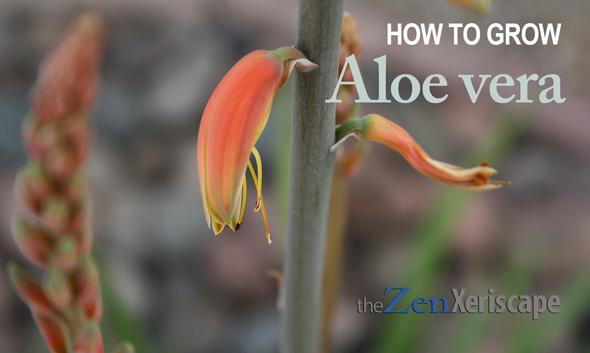The ponytail palm (Beaucarnea recurvata) is one of the easiest, most hardy houseplants to grow. And if you live in USDA growing zones 9b-to-11, you can also grow this unique-looking plant outdoors! That all sounds good, but there must be a catch! Let’s discuss the ponytail palm pros and cons, and then you can decide if this plant would make a good addition to your landscape!
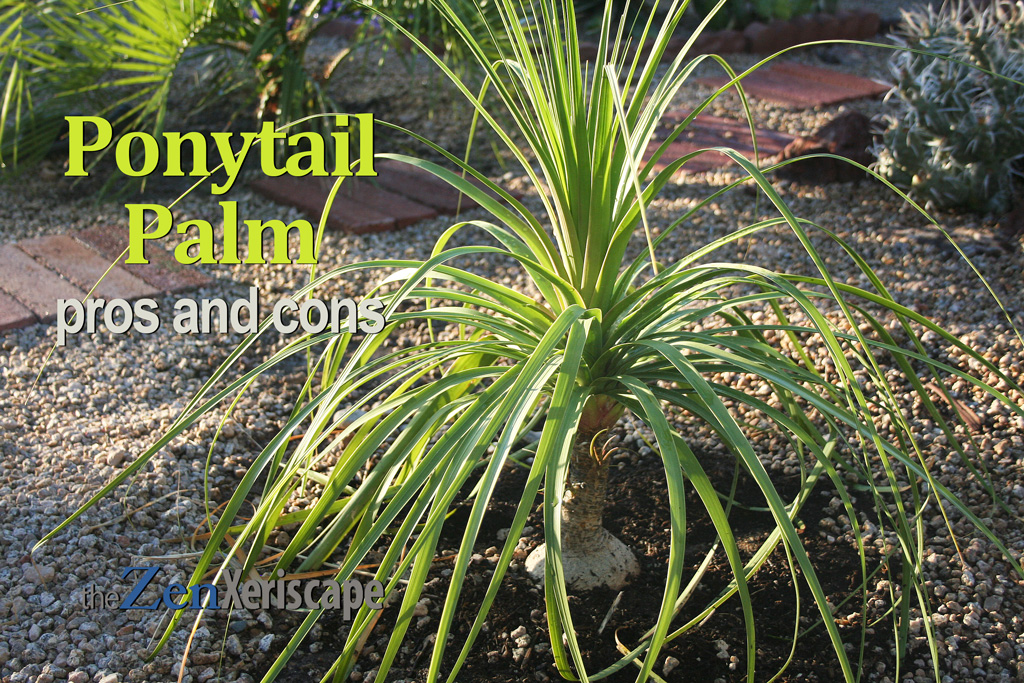
It is drought-tolerant, and doesn’t require
much maintenance.
Photo by Doug Martin
But first, what is the ponytail palm?
Ponytail palm description:
The ponytail palm is not really a palm tree, but is more closely related to the agave and yucca group of plants. It has long, grass-like leaves which can get longer as the plant grows. The leaves emerge from the center of a rosette at the top of the trunk.
In fact, what I find most interesting about this plant is its trunk, which has a large, bulbous-like base called a caudex. This caudex stores water, so it can survive long periods without irrigation.
The plant can get over six feet tall, but it takes a long time to reach that height. The one that I have is only about one-and-a-half feet tall. Unfortunately, I don’t think I’ll live long enough to see it at its most magnificent height.
And now, the ponytail palm pros and cons…
Ponytail palm pros and cons
PROS
Unique, tropical appearance:
The large, bulbous trunk at the plant’s base is a real eye-catcher—it almost looks prehistoric. In addition, its long, grass-like leaves arch over the main trunk and give it a tropical, exotic look.
Drought tolerant:
Because its bulbous caudex at the base of its trunk is a massive storehouse of water, this plant can go for months without watering (once established). That makes it an ideal plant for busy people who don’t have time to maintain their landscape and house plants.
During the hot summer in southern Arizona, I deeply water the ponytail palm in my xeriscape once a week. However, I try and keep all water away from that caudex, or the base of its trunk.
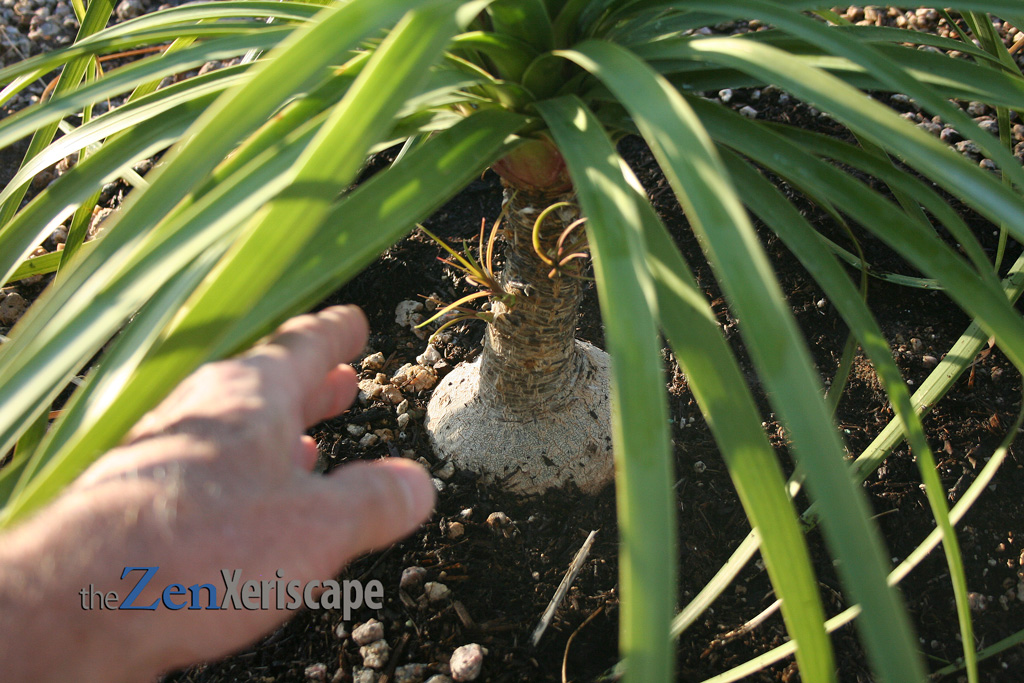
Over the years, it will continue to get larger
as the plant grows and trunk gets longer.
Photo by Doug Martin
Get Prime! (As an Amazon Associate, I earn a commission from qualifying purchases.)
Low maintenance and easy to grow:
Besides watering, I prune off the dead and dying leaves on the trunk in the early spring. That job only takes a few minutes, and that’s the extent of my maintenance for this plant.
During the winter, I water even less. Once-a-month waterings are sufficient during the colder months.
Long life span:
The ponytail palm will live for a long time. These plants will easily survive for decades in your container, as well as living 50-years or more outside in your landscape.
Grows slowly:
This plant’s rate of growth is slow. I think this succulent in my landscape only adds an inch-or-two per year to its main trunk. So, it will not outgrow its allocated space in your landscape for a long time.
And, if you’re growing this plant inside your home in a container, it will remain comfortable in that container for years. Of course, repotting and adding new soil might stimulate its growth slightly, but that is not an urgent task.
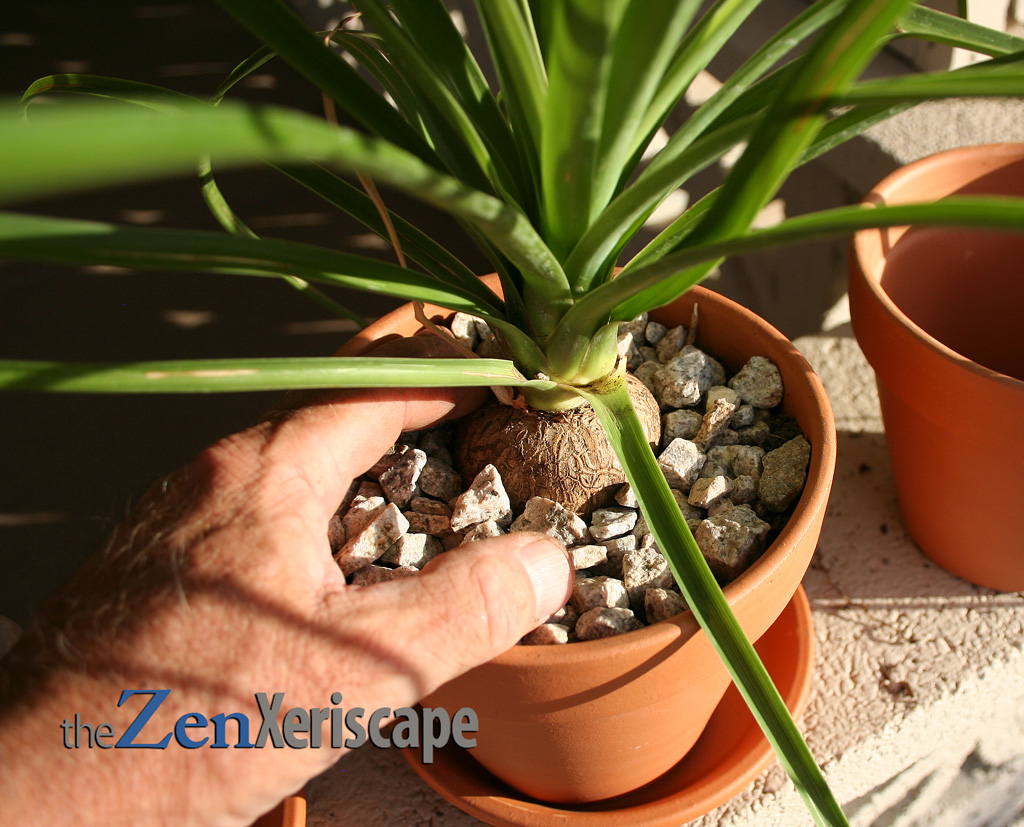
Use potting soil designed for cactus plants,
and a container that has drainage holes.
Photo by Doug Martin
Insect pests are rare:
I have never seen insects or other pests disturbing my ponytail palm. With too much water, you might see spider mites or mealybugs. But, too much water can also kill your plant. So, insect pests might be a sign that you’re watering too much.
Heat tolerant:
The ponytail palm is a perfect plant for most xeriscapes, rock gardens, or other types of arid landscapes. My plant survived the extremely hot summer of 2024 where daytime temps often exceeded 120 degrees fahrenheit.
In addition, it also survived temperatures that dipped into the low 20’s. This plant is best suited for landscapes in USDA hardiness zones of 9b-to-11.
Pet-friendly:
This succulent does not have any sharp spines or nasty glochids that can ruin your pet’s playtime. So, it is mostly pet-friendly. In fact, my dog likes to hang out around this plant and under its arching leaves.
But, there is an unseen danger with this plant’s leaves—it has tiny, almost invisible serrated edges that can cut into flesh. In the past, they have cut into my flesh! So, I do worry about my dog’s eyes getting cut up from those leaf edges.
In that respect, this plant may not be pet-friendly, and your pets should be supervised.
Ponytail Palm pros and cons
CONS
Overwatering can kill this succulent:
Watering too much, especially if water accumulates near the plant’s base, can quickly kill this plant. Its caudex will rot, and once that process begins, it is almost impossible to save this plant.
If planting outside, be sure the surrounding soil drains quickly. And, if you are using a container, be sure it has drainage holes. Also, use potting soil mixed with a little sand and perlite, or use potting soil especially designed for cactus plants.
This plant grows slowly:
While slow growth can be a positive characteristic, it can also be a detriment. As I noted earlier, the ponytail palm I have in my landscape is only adding an inch-or-two growth each year to its main trunk.
That means that I will never live long enough to see it reach its six+ feet of potential height. That’s sad, because this plant is a real stunner when fully mature. In the meantime, I’ll just have enjoy it each day, and not worry about the future. Someone else can enjoy it then!
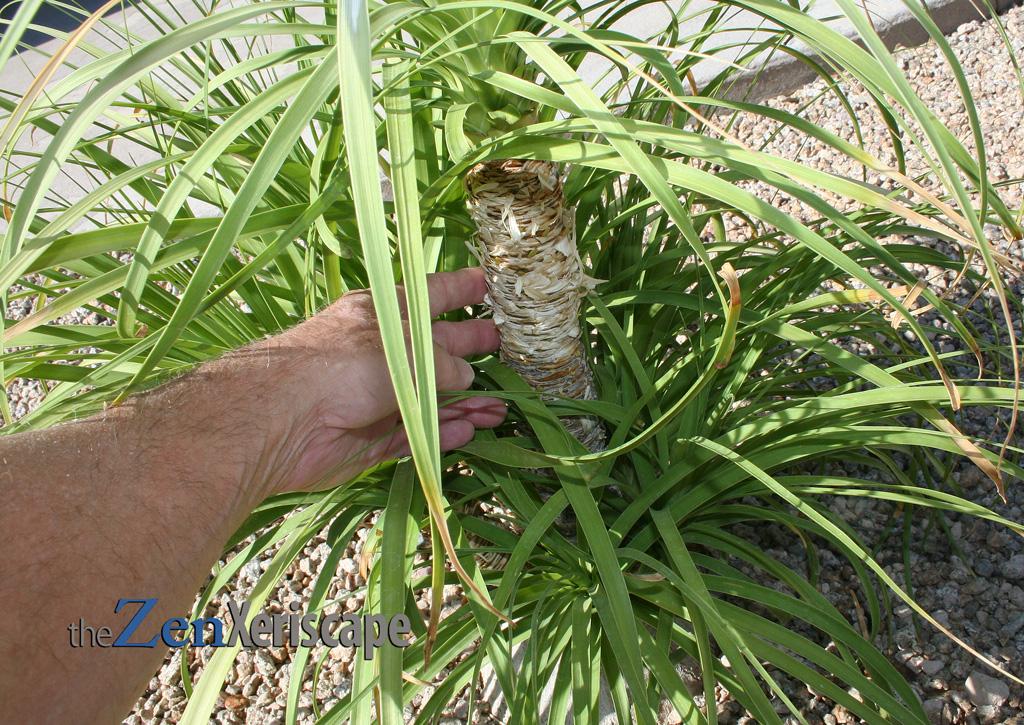
Typically, it adds about two inches of new growth
to the trunk every year. So, it’s going to take
a long time to get six feet tall!
Photo by Doug Martin
Sharp leaf edges can cut flesh:
While the edges of this succulent do not look sharp, they can be sharp enough to make you bleed. The leaves have tiny serrated edges that are difficult to see, but caution is advised when pruning.
In fact, the first time I removed the lower, older leaves from my ponytale palm, I thought everything was going well. But, after a minute, I realized that I had blood all over my unprotected hand! What happpened? I didn’t feel a thing!
But, just like a sharp razor blade, the serrated leaf edges silently made narrow, painless cuts into my flesh. Since then, I always wear gloves when I do my yearly spring maintenance on this plant.
Leaves can get brown from sun exposure:
Even though this plant can take the heat, its leaves can show the ill-effects of too much sun. It’s July as I write, and the leaves on the west side of my ponytail palm are getting a little brown from the afternoon heat and sun exposure.
It’s not a big deal, because the plant still has a tropical green look overall. And, despite suffering stress from the afternoon sun in Phoenix, Arizona, this plant will survive, and will continue to thrive in the extreme heat.
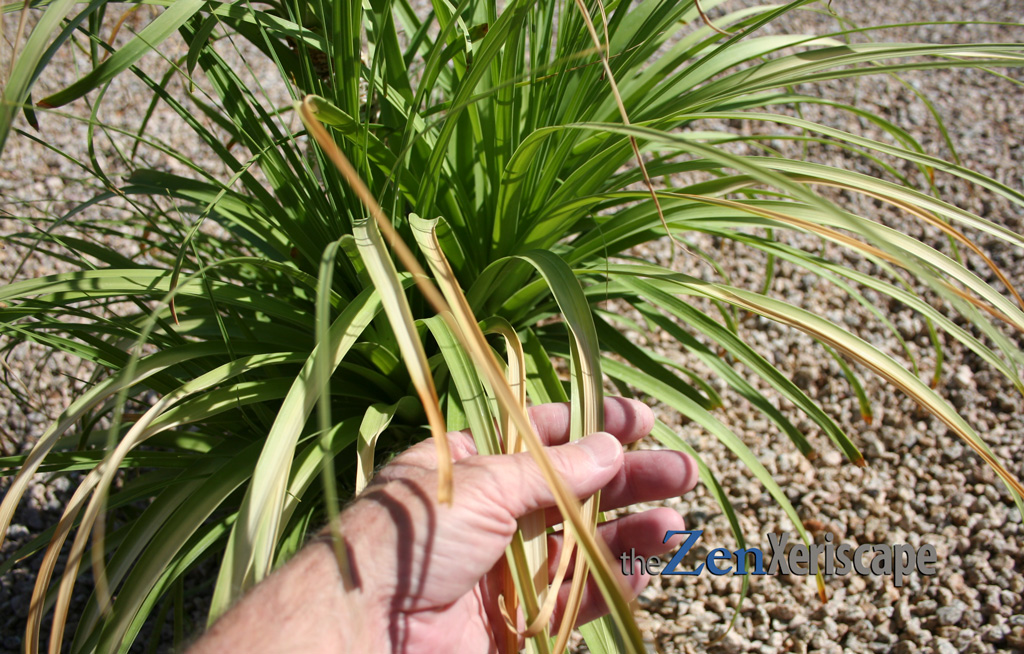
are getting burned by the hot July sun.
Overall, though, most of the vegetation
remains healthy and green.
Photo by Doug Martin
A few Amazon vendors offer ponytail palm trees for sale. In general, I’ve had good luck ordering plants through Amazon, but be sure to check the vendor’s reputation before ordering. (As an Amazon Associate, I earn a commission from qualifying purchases.)
Takeaways:
Ponytail Palm pros and cons
The ponytail palm has a tropical appearance, and its unique-looking caudex at the base of its trunk gives it an almost prehistoric look. It’s really cool!
Plus, this plant might be one of the hardiest and easiest to grow succulents in my landscape. It doesn’t require much maintenance, and doesn’t require much water. It’s easy!
However, it can die very quickly from too much water. The base of the trunk can rot, and that will be the end of your plant.
But overall, this succulent is great for a beginning gardener and will last for decades. I highly recommend the ponytail palm for your landscape or container!
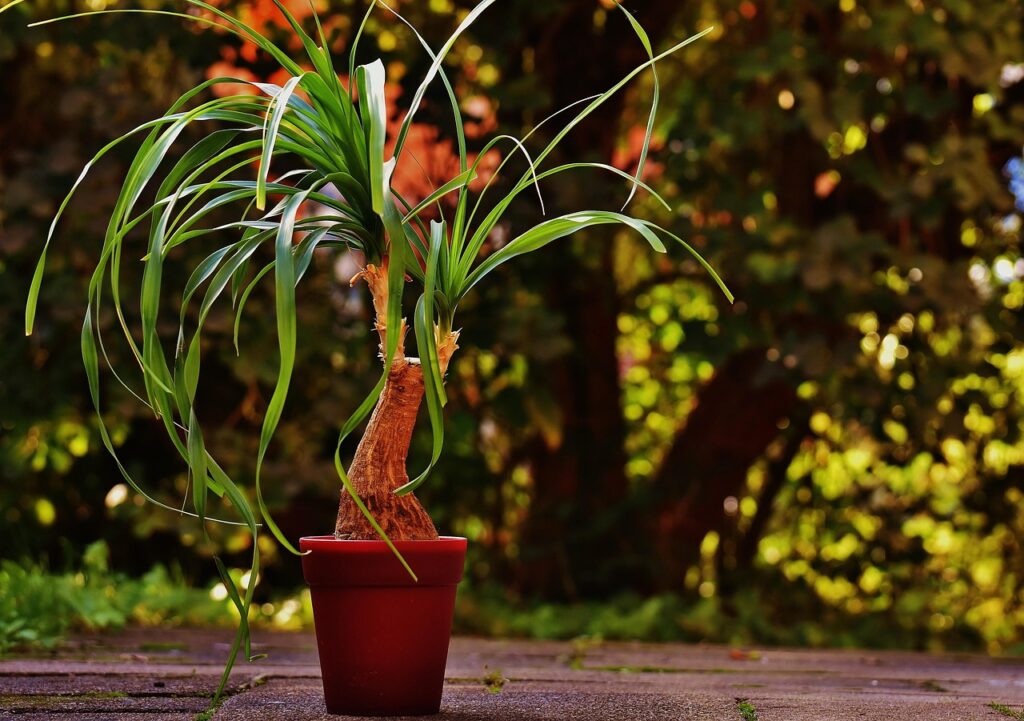
Content and photos (except as noted above) by Doug Martin and The Zen Xeriscape


